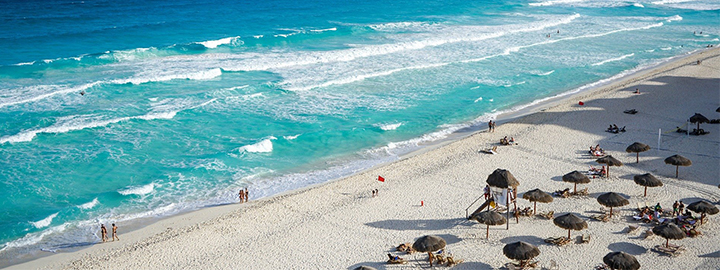
Senate approves the reduction of the federal maritime-terrestrial zone (ZOFEMAT) extension
May 03, 2020
News and Insights
Senate approves the reduction of the federal maritime-terrestrial zone (ZOFEMAT) extension
Contact Us:
Senate approves the reduction of the Federal Maritime-Terrestrial Zone Extensiont
On April 29th of this year, the Senate approved the Decree reforming Articles 7 and 119 of the General Law of National Assets (Ley General de Bienes Nacionales), which reduces from 20 to 10 meters the Federal Maritime Terrestrial Zone (ZOFEMAT) by expanding the area of maritime beaches that can be freely and unreservedly accessed.
In terms of this reform, maritime beach will be understood as the parts of land, sand, cliffs, rocky formations, as well as any other surface or geoform that by virtue of the tide covers and uncovers the sea, plus a strip of 10 meters wide inland and contiguous to the limits of the greatest ebb and flow, up to the limits of the greatest annual flow; area will be for public use, with free and open access to it and to the sea always guaranteed in any direction, so there may not be a charge for access, and may not obstruct or prohibit the passage, nor be used as private property.
Prior to the reform, maritime beaches were understood only as the parts of land that by virtue of the tide covers and uncovers the water, from the limits of greatest ebb to the limits of greatest annual flow.
Consequently, by virtue of the reform approved by the Senate, in terms of Article 119 of the General Law of National Assets, both in the continental massif and in the islands that make up the national territory, the federal maritime-terrestrial zone shall be determined:
a) When the coast presents maritime beaches, the ZOFEMAT will be constituted by the strip of 10 meters wide of firm land, passable and contiguous to such maritime beaches or, in its case, to the banks of the rivers, from the mouth of these in the sea, up to 100 meters upstream; and
b) In the case of lakes, lagoons, estuaries or natural deposits of marine water that communicate directly or indirectly with the sea, the 10-meter strip of ZOFEMAT will be counted from the point where the highest annual reservoir or high tide limit reaches, under the terms determined by the respective regulation.
The aforementioned Decree responds to the initiative presented by Senator José Luis Pech Várguez, of the Parliamentary Group of the National Regeneration Movement (MORENA), in which he considered that with the reform it is intended that the beaches will be considered as public goods that can be enjoyed freely and free of charge, at the same time that the Mexican State will take advantage of them in a sustainable manner for the benefit of the national finances. Notwithstanding the foregoing, among the consequences of this reform is the decrease in income to the Mexican State from ZOFEMAT concessions in 17 coastal entities of the country.
Likewise, it should be noted that the reform does not solve possible conflicts that could arise from the reform with respect to constructions that could be located as of today in the first 10-meter strip and the access to the same.
In this sense, the decree that was approved by 111 of the 115 legislators present in the session, proposes to modify the extension of the ZOFEMAT from 20 meters wide on land to only 10 meters, according to the new limits of the maritime beaches.
Finally, it is important to point out that this decree must follow the corresponding legislative process, and will therefore be sent to the Chamber of Deputies for discussion, voting and eventual approval.
Should you require further information regarding this issue, please do not hesitate to contact us.
Yours sincerely,
Cannizzo



